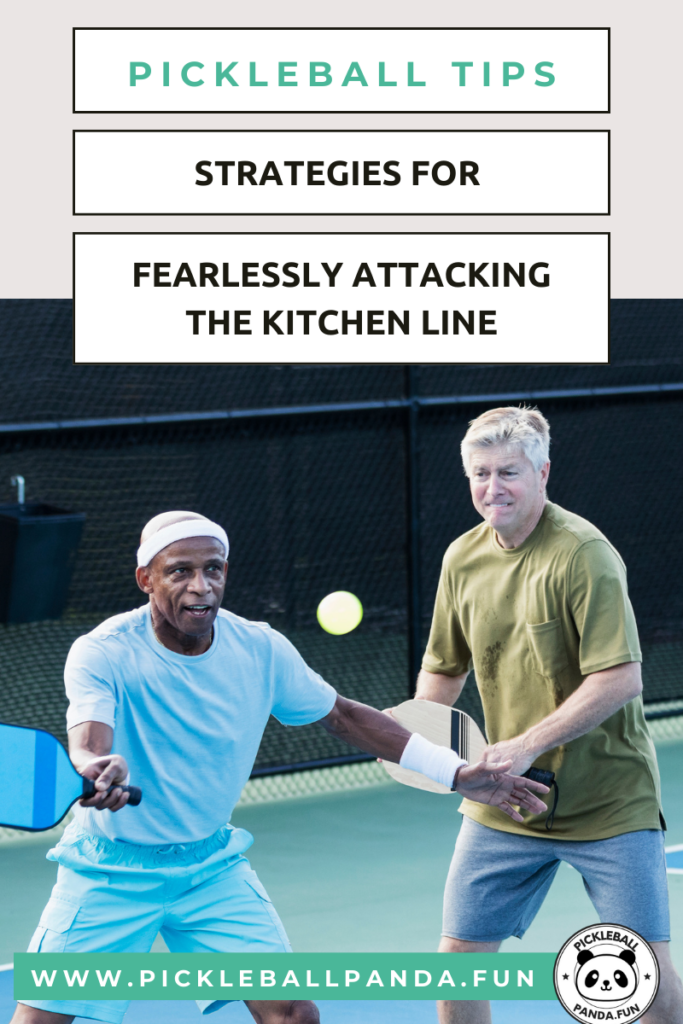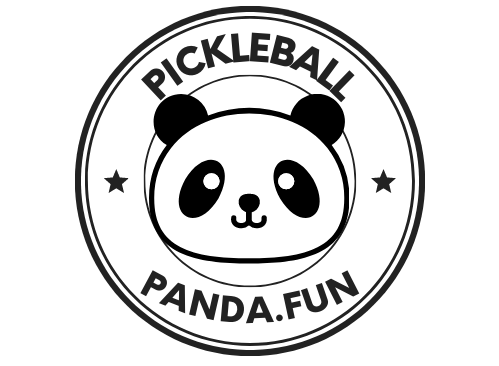
Pickleball Strategy: Attacking the Kitchen Line
Pickleball, a game that combines elements of tennis, badminton, and ping pong, has been gaining rapid popularity among players of all ages. One of the key aspects that separates pickleball from its counterparts is the concept of the “Kitchen Line,” also known as the “Non-Volley Zone” or “NVZ.” In this article, we will delve into the strategic importance of attacking the kitchen line, providing valuable insights into how players can gain a competitive edge on the pickleball court.
Table of Contents
- Introduction
- Understanding the Kitchen Line
- The Significance of Attacking
- Mastering the Drop Shot
- Power Plays: Overhead Smashes
- Utilizing the Dink Shot
- Creating Doubt with the Third Shot
- Footwork and Positioning
- Exploiting Opponent Weaknesses
Doubles vs. Singles Strategies
Adapting to Different Skill Levels
Practicing with Purpose
- Staying Calm Under Pressure
- Conclusion
- Frequently Asked Questions
Introduction
Pickleball, a sport known for its accessibility and fast-paced nature, requires players to develop a strategic mindset. At the heart of successful pickleball strategy lies the ability to effectively attack the kitchen line. This article will provide players with a comprehensive guide to mastering this crucial aspect of the game.
Understanding the Kitchen Line
The kitchen line, marked by a seven-foot no-volley zone, stretches across the width of the court just beyond the net. Players are not allowed to execute a volley (hitting the ball before it bounces) while standing within this zone. This is what sets this game apart from tennis and makes it so fun. Having control of the kitchen line means you control the pace of the game and have the strategic advantage. Understanding this limitation is key to devising a winning strategy.
The Significance of Attacking
Aggressive play near the kitchen line can put immense pressure on opponents. By doing so, you limit their reaction time and force them into uncomfortable positions. A well-executed attack can set the tone for the entire point, giving you the upper hand. It is scary as a beginner to approach the kitchen as a beginner, when and how to do this because the ball moves so fast. It is part art and part science how and when to do this.
Mastering the Drop Shot
The drop shot is a finesse move that can catch opponents off guard but is intend to buy yourself time to approach the NVZ safely. Gently hitting the ball over the net and just within the kitchen line requires precise control and timing. It can force opponents to wait while you approach the net cautiously, giving you an opportunity to level the field are reduce their advantage at the net.
Creating Doubt with the Third Shot
The third shot is a critical moment in pickleball. A well-placed shot that lands close to the kitchen line can create uncertainty for your opponents. They must decide whether to let the ball bounce or attempt a volley, potentially leading to mistakes. Placing the ball towards your players backhand will create additional issues with ball control. But attacking your drop shots to the deep corners of the kitchen will decrease the chance of an offense shot by your opponent.
Footwork and Positioning
Successful kitchen line attacks require precise footwork and positioning. Being ready to move quickly and efficiently can mean the difference between a successful shot and a missed opportunity. Approaching the line is the first step to controlling the kitchen line. If you are doing this after the second shot is easier with a high and deep service return. Approaching after the third shot is the most challenging shot as a beginner to intermediate player.
If you are unsure about when to approach the kitchen line, watch your partner. It will give you better insight about when to attack or stay at the base line. Watch your opponents paddle. The height of their paddle will give you an idea of the height of your drop shot and how they attend to attack the ball. We use the green-yellow-red light approach. Approach if you see a green light, this is when your opponents paddle is pointed down and below the waist. It’s a yellow light when you the paddle is pointed sideways and between the waist and shoulders. Your opponents can volley but they will need to swing up on the ball is the third shot is dropped in a downward angle. Approach the line with caution and watch for short drop shots. If your opponents paddle is pointed up and positioned in the area from his waist to his shoulder, this is a red light. Don’t approach the kitchen line and watch for a smash or drive.
Once at the line, keeping a narrow distance between your partner will reduce your area of vulnerability. So if your partner gets pulled off the court with a wide shot, you need to move in to cover. If a lob comes, you both need to pull back to defend. Keeping light on your feet will keep you in good position to keep control of the kitchen line.
Exploiting Opponent Weaknesses
Observing your opponents’ weaknesses and exploiting them near the kitchen line can give you a significant advantage. Whether it’s a backhand weakness or poor lateral movement, strategic targeting can yield positive results. Notice how well your opponent moves forward, back and laterally. Notice if they attack or counter attack better at the kitchen. Notice which partner in doubles handles the ball better.
Doubles vs. Singles Strategies
The approach to attacking the kitchen line can vary between doubles and singles play. Understanding the nuances of each format is crucial for effective strategy development. Singles can be played more similar to tennis and approaching the line is not as important with a strong drive and ball place from the baseline. Doubles, it is more urgent to get to and control the line to win the point.
Adapting to Different Skill Levels
Versatility is key when it comes to pickleball strategy. Adapting your kitchen line attacks based on your opponent’s skill level can keep them on their toes and prevent predictability. Playing at recreational settings, you should vary your play. If it is a social environment, understand that people are there to have fun and competitive. When playing with player that don’t control the ball as well, please have consideration when hitting overheads. They may not have the skills to back off the line when the ball is popped up.
Practicing with Purpose
Improvement in pickleball, like any sport, requires dedicated practice. Specifically honing your kitchen line attacks during practice sessions can enhance your in-game performance. Practice place over pace, ball control first then speed. Work on ball control at this kitchen line, hitting targets on the court or targets on your partner. Your game will improve the more you drill. To learn more drills go to www.PickleballPanda.Fun
Staying Calm Under Pressure
Maintaining composure in high-pressure situations is vital. Staying focused and composed when executing kitchen line attacks can yield better outcomes. When at this kitchen, staying calm and being patient for the right opportunties. As your skills progress, consistent dinking and volleying at the kitchen line will get easier. As you get better, playing more competitive players and situations like tournaments will improve your ability to stay calm in different situations. This is a game you can play your whole life so enjoy your progression and understanding your goal is to have fun and stay healthy will keep you calm and coming back for more.
Conclusion
Attacking the kitchen line is an essential element of successful pickleball strategy. By mastering the art of well-timed drop shots, powerful overhead smashes, and strategic dinks, players can keep their opponents guessing and gain a competitive edge. Remember, practice makes perfect, and by incorporating these tactics into your gameplay, you’ll be well on your way to becoming a formidable pickleball player.
Frequently Asked Questions
- Q: Can I volley the ball from the kitchen line? A: No, the kitchen line is a no-volley zone, and volleys are not allowed while standing within it.
- Q: Is the drop shot effective in doubles play? A: Yes, the drop shot can be highly effective in both doubles and singles play, catching opponents off guard.
- Q: What if my opponent is already at the kitchen line? A: Use deceptive shots and feints to create openings or force them out of position before attacking.
- Q: How do I improve my footwork for kitchen line attacks? A: Regular footwork drills and agility exercises can help improve your movement near the kitchen line.
- Q: Where can I find more resources to enhance my pickleball skills? A: For further guidance, tips, and resources, visit www.PickleballPanda.Fun.
In conclusion, attacking the kitchen line is a skill that requires practice, strategy, and finesse. By incorporating these techniques into your gameplay and adapting them to different scenarios, you’ll be well-equipped to elevate your pickleball performance to the next level.
